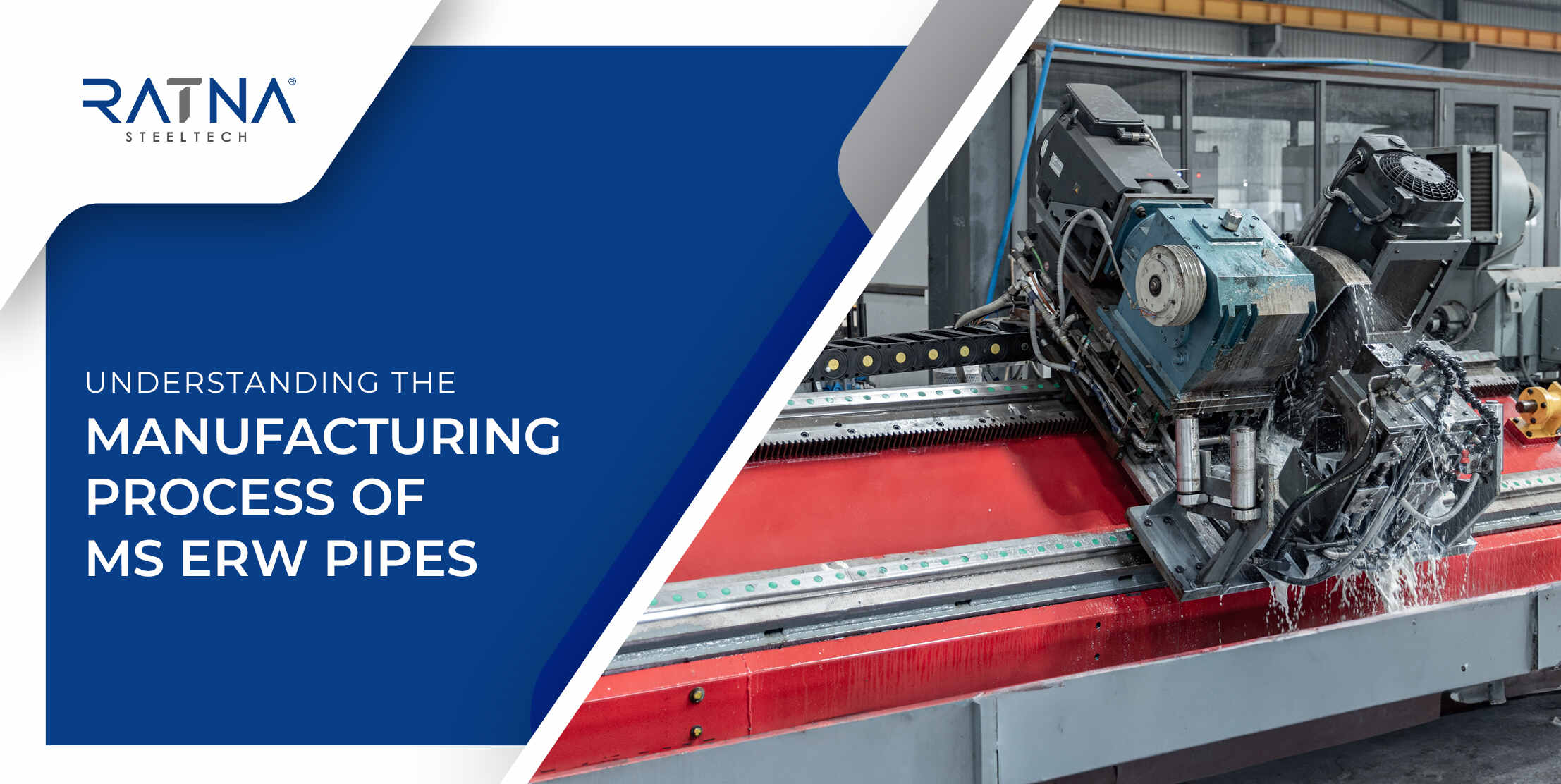The world of manufacturing is a fascinating realm where raw materials are transformed into essential components that drive various industries. One such crucial component is the Mild Steel Electric Resistance Welded (MS ERW) pipe. As infrastructure development continues to soar, the demand for reliable and sturdy pipes has increased, making it essential to comprehend the intricate manufacturing process behind MS ERW pipes. In This Blog You Will Explore Understanding the Manufacturing Process of MS ERW Pipes With Ratna Steeltech.
MS ERW Pipes Manufacturer in India:
At the heart of this manufacturing journey lies the expertise of MS ERW Pipes manufacturers in India. These manufacturers play a pivotal role in meeting the nation’s infrastructure needs by producing high-quality pipes. With a commitment to excellence and cutting-edge technology, they contribute significantly to India’s industrial landscape.
Understanding the ERW Pipes Manufacturing Process:
1. Raw Material Selection:
The journey of an MS ERW Pipe begins with the selection of high-quality raw materials, primarily mild steel. The chosen raw material must conform to specific standards to ensure the end product’s strength, durability, and corrosion resistance.
2. Shearing and Slitting:
Once the raw material is sourced, it undergoes shearing and slitting processes to achieve the desired dimensions. This step is crucial in ensuring uniformity and precision in the final product.
3. Formation of the Pipe:
The slitted coils are then fed into the tube mill, where they go through a series of forming rolls. These rolls gradually shape the flat strip into a cylindrical shape. The edges are then heated and fused through high-frequency electric resistance welding.
4. Welding:
Electric Resistance Welding, or ERW, is a key element in the manufacturing process. The edges of the strip are heated using an electric current, and pressure is applied to forge a strong weld. This process ensures the integrity of the pipe, providing it with the strength to withstand various applications.
5. Sizing and Cooling:
Post-welding, the pipe is sized to meet the specified dimensions. This step is crucial for achieving uniformity and accuracy. Subsequently, the pipe undergoes a cooling process to stabilize its structure and enhance its mechanical properties.
6. Cutting and Testing:
The cooled pipes are then cut into desired lengths. Quality control is a critical aspect of the process, with the pipes undergoing rigorous testing to ensure they meet industry standards. Various tests, including hydrostatic testing and ultrasonic testing, are conducted to verify the pipes’ strength and integrity.
7. End Finishing and Coating:
The final steps involve end-finishing processes, where the ends are either threaded, beveled, or grooved based on the intended application. Additionally, pipes may undergo coating processes to enhance corrosion resistance, with options like galvanization or painting.
Conclusion:
our comprehensive guide on Understanding the Manufacturing Process of MS ERW Pipes. Ratna Steeltech, a leading player among MS ERW Pipes manufacturers in India, stands as a beacon in the realm of precision and innovation within the manufacturing process of these essential components. Their commitment to quality aligns seamlessly with the increasing demand for reliable and robust pipes that serve as the backbone for diverse infrastructure projects across the nation. The meticulous craftsmanship and incorporation of advanced technology by Ratna Steeltech underscore the intrinsic strength and durability of MS ERW pipes, meeting and surpassing the stringent requirements of various industries. In essence, the marriage of traditional craftsmanship and modern technology, exemplified in the manufacturing process of MS ERW pipes, ensures a resilient and reliable infrastructure that fosters the growth and development of the nation for generations to come.

